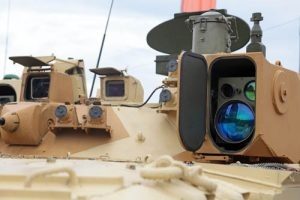Manufacturers understand they can save money on the lens manufacture process if they can utilize commercial off the shelf (COTS) products. In many areas of military design and government agencies, this COTS model is being adopted because it is a cost saving measure. The key factor to making this a viable option is to find and develop ways to incorporate these stock lenses into custom designs.
Benefits of COTS
Production cost is the major benefit that manufacturers find when they use commercial off the shelf lenses. Additionally, COTS can amp up volume production yields with reduced unit cost. This is especially true in optical components because using stock lenses avoids the time and cost of set up fees and tooling as this can make a custom optic cost up to ten times more when running small quantity production lines. The return on investment usually appears at a production volume of more than 1,000 pieces – a level rarely reached in the high end optical manufacturing field.
Using stock optics also leads to a reduction in design and development lead times because the COTS are readily available. Manufacturers won’t have to wait months for a specifically-tooled optic to arrive before researchers can begin prototype designing. Also, if a favorite vendor discontinues an optic, it can take months to find another to take its place. COTS helps manufacturers avoid this delay-causing ramification.
Stock versus custom-designed lenses
While COTS has its benefits, there are also drawbacks that need to be addressed. These include the fact that stock lenses work best when the system they are being incorporated into are paraxial and relatively slow in its design requirements. With an optical speed of f/8 or higher, it is not as easy to obtain COTS.
Optical speeds of lower than f/8 bring the ability to customize exacting measurements in composition, curvature and lens coating.
Additionally, even though there are myriad stock components available, they may not be an exact match for a particular design. Using a mismatched lens could damage the original component and lead to lengthy and costly design iterations.
You may not be able to avoid using a custom optic, especially based on f/# and design size. If the lens must meet rigid size and weight constraints, using a custom optic may be the most cost effective option.
There are clever developers who can find ways to customize stock optical components to address unique design needs, but the cost of this process may need to be weighed against off the shelf optics.
Universe Kogaku designs and manufactures optical lenses for industrial, medical, high tech and electronic applications. Contact us for a quote on standard and custom lens assemblies for your specific project.